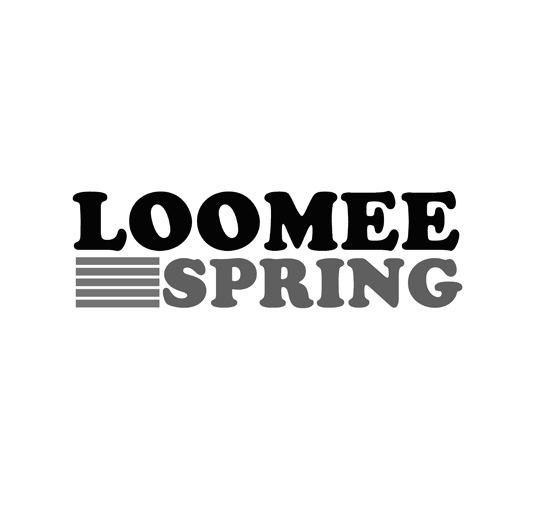Fatigue loading of springs - application of Goodman analysis

If a compression
spring is designed with the yield limit above the solidity limit and
manufactured correctly then the only way it can fail is through fatigue. The
leftmost photograph of a typical fatigue failure surface reveals a crack source
near the inner more highly stressed surface of the wire. If stress raisers
occur due to poor manufacture or to corrosion as illustrated in the other
photographs, then fracture is likely to emanate from the stress raisers thereby
reducing fatigue life.
In the absence of
such stress raisers, correlation of the repeated loading on a spring with its
material's properties in order to ascertain safety is usually carried out via a
Goodman analysis. Given the spring material and wire diameter, the shear
ultimate Sus and fatigue
strength in reversed shear Ses may be found
from the literature, or as explained above. The conservatively straight
Goodman failure locus is thus defined in τa - τm space, as
shown on the diagram ( A) { nomenclature
explanation}.
Spring loading is
almost invariably unidirectional, so τa ≤ τm and loading
states occur only to the right of the 45o stress
equality line. One such load state is illustrated, lying on a line which
corresponds to a safety factor of n, ie. the line joins the points
( Sus/n, 0), (0, Ses/n) and so lies
parallel to the failure locus. From similar triangles the Goodman fatigue
equation is :
( 4a)
τm /Sus + τa /Ses =
1/n in which the stress components are given
by
τm =
Ks 8 FmC / πd2 where Fm =
( Fhi + Flo ) /2
and
τa = Kh 8 Fa C / πd2 where Fa = (
Fhi - Flo ) /2
The full stress
concentration factor Kh is applied
to the alternating component τa in ( 4a).
Stress redistribution is presumed to follow localised yielding, with the result
that stress concentration is usually ignored in figuring the steady component
of fatigue loading. The mean stress τm is therefore based
on the factor Ks, which accounts
only for direct stresses in the torsion equation.
The safe operating
window of the Goodman diagram is completed by the yield limit. If ny is the
factor of safety against the yield being exceeded, then :
( 4b)
τm + τa = Sys/ny since ( τm + τa ) represents the
maximum stress.
A fatigue analysis
of the preceding example using ( 4a) is carried out in this example.
The traditional method of presenting allowable fatigue stresses is to plot the
maximum shear stress τhi against the minimum τlo, rather
than the amplitude versus the mean as above. Although strictly not correct, the
full stress concentration factor Kh is applied conservatively to
both components which are inserted into the Goodman expression ( 4a) to
give the failure locus:
( 4c)
τhi =
{ 2 Sus Ses / ( Sus + Ses ) } + { ( Sus - Ses ) / ( Sus + Ses ) } τlo where
τhi = Kh 8 C Fhi / πd2 and τlo = Kh 8 C Flo / πd2
Thus for the wire of the foregoing example with stresses in MPa :
-
( 4a) Goodman failure
locus τm/888
+ τa /183
= 1
-
( 4b) yield failure
criterion τhi =
677
-
( 4c) modified Goodman
locus τhi = 303 + 0.658 τlo
Though ( i) and
(iii) appear identical, since τhi = τm + τa and
τlo = τm - τa, the four stress components are defined with different
stress factors in ( 4a) and ( 4c). The safe operating window from the
last two relations is shown here. States below the equality line are impossible
as this would mean reversal of the minimum / maximum roles. The material
strengths of Table 2 were deduced via ( 4c) from plots such as this in
Godfrey.
The fatigue
strength in repeated (one-way) shear S'es forms the
basis of a Goodman approach, diagram ( B) which is less
conservative than that based on reversed shear, diagram ( A). If
the test stress varies between zero and S'es, then τa = τm = S'es/2, and the
failure line joins the points ( Sus, 0), ( S'es/2, S'es/2 ). The
resulting design equation is :
( 4d)
τm /Sus + τa ( 2/S'es - 1/Sus ) =
1/n
Since it is rare
that the fatigue strength in repeated loading is available, we will henceforth
employ ( 4a) and ( 4b) with the fatigue strength
corresponding to whatever life is of interest.

